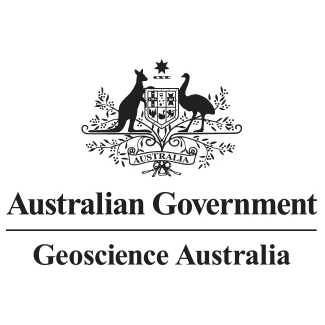Full description
Note: Geoscience Australia no longer supports users' external hard drives. The data can either be downloaded from the ELVIS Portal or from the Related links.The 1 second Shuttle Radar Topography Mission (SRTM) Digital Elevation Models Version 1.0 package comprises three surface models: the Digital Elevation Model (DEM), the Smoothed Digital Elevation Model (DEM-S) and the Hydrologically Enforced Digital Elevation Model (DEM-H). The DEMs were derived from the SRTM data acquired by NASA in February 2000 and were publicly released under Creative Commons licensing from November 2011 in ESRI Grid format.
DEM represents ground surface topography, with vegetation features removed using an automatic process supported by several vegetation maps. This provides substantial improvements in the quality and consistency of the data relative to the original SRTM data, but is not free from artefacts. Man-made structures such as urban areas and power line towers have not been treated. The removal of vegetation effects has produced satisfactory results over most of the continent and areas with defects identified in supplementary layers distributed with the data, and described in the User Guide.
DEM-S represents ground surface topography, excluding vegetation features, and has been smoothed to reduce noise and improve the representation of surface shape. An adaptive smoothing process applied more smoothing in flatter areas than hilly areas, and more smoothing in noisier areas than in less noisy areas. This DEM-S supports calculation of local terrain shape attributes such as slope, aspect and curvature that could not be reliably derived from the unsmoothed 1 second DEM because of noise.
DEM-H is a hydrologically enforced version of the smoothed DEM-S. The DEM-H captures flow paths based on SRTM elevations and mapped stream lines, and supports delineation of catchments and related hydrological attributes. The dataset was derived from the 1 second smoothed Digital Elevation Model (DEM-S) by enforcing hydrological connectivity with the ANUDEM software, using selected AusHydro V1.6 (February 2010) 1:250,000 scale watercourse lines and lines derived from DEM-S to define the watercourses. The drainage enforcement has produced a consistent representation of hydrological connectivity with some elevation artefacts resulting from the drainage enforcement.
Further information can be found in the supplementary layers supplied with the data and in the User Guide.
Lineage
Maintenance and Update Frequency: asNeededIssued: 2011
Modified: 16 09 2019
text: westlimit=113.00; southlimit=-44.00; eastlimit=154.00; northlimit=-10.00; projection=WGS 84 (EPSG:4326)
User Contributed Tags
Login to tag this record with meaningful keywords to make it easier to discover
Download the DEM-H [26.9 GB]
uri :
https://elevation-direct-downloads.s3-ap-southeast-2.amazonaws.com/1sec-dem/71498.zip![]()
Download the DEM-S [26.9 GB]
uri :
https://elevation-direct-downloads.s3-ap-southeast-2.amazonaws.com/1sec-dem/70715.zip![]()
Download the DEM [23.5 GB]
uri :
https://elevation-direct-downloads.s3-ap-southeast-2.amazonaws.com/1sec-dem/69816.zip![]()
ELVIS Data Portal
uri :
http://www.ga.gov.au/elvis/![]()
1 second SRTM Derived Products User Guide
Digital Elevation Model (DEM) of Australia with 1 Second Grid WCS
Digital Elevation Model (DEM) of Australia with 1 Second Grid MapServer
uri :
https://services.ga.gov.au/gis/rest/services/DEM_SRTM_1Second_2024/MapServer![]()
Digital Elevation Model (DEM) of Australia with 1 Second Grid WMS
Digital Elevation Model (DEM) Shuttle Radar Topography Mission (SRTM) 1 Second over Australian Bathymetry Topography 2024 MapServer
Digital Elevation Model (DEM) Shuttle Radar Topography Mission (SRTM) 1 Second over Australian Bathymetry Topography WCS
Digital Elevation Model (DEM) Shuttle Radar Topography Mission (SRTM) 1 Second over Australian Bathymetry Topography WMS
Digital Elevation Model (DEM) Shuttle Radar Topography Mission (SRTM) 1 Second over Australian Bathymetry Topography 2024 MapServer
uri :
https://pid.geoscience.gov.au/service/ga/104224![]()
Digital Elevation Model (DEM) Shuttle Radar Topography Mission (SRTM) 1 Second over Australian Bathymetry Topography 2024 WMS
uri :
https://pid.geoscience.gov.au/service/ga/100319![]()
Digital Elevation Model (DEM) Shuttle Radar Topography Mission (SRTM) 1 Second over Australian Bathymetry Topography WCS
- global : aac46307-fce8-449d-e044-00144fdd4fa6
- Local : pid.geoscience.gov.au/dataset/ga/72759


